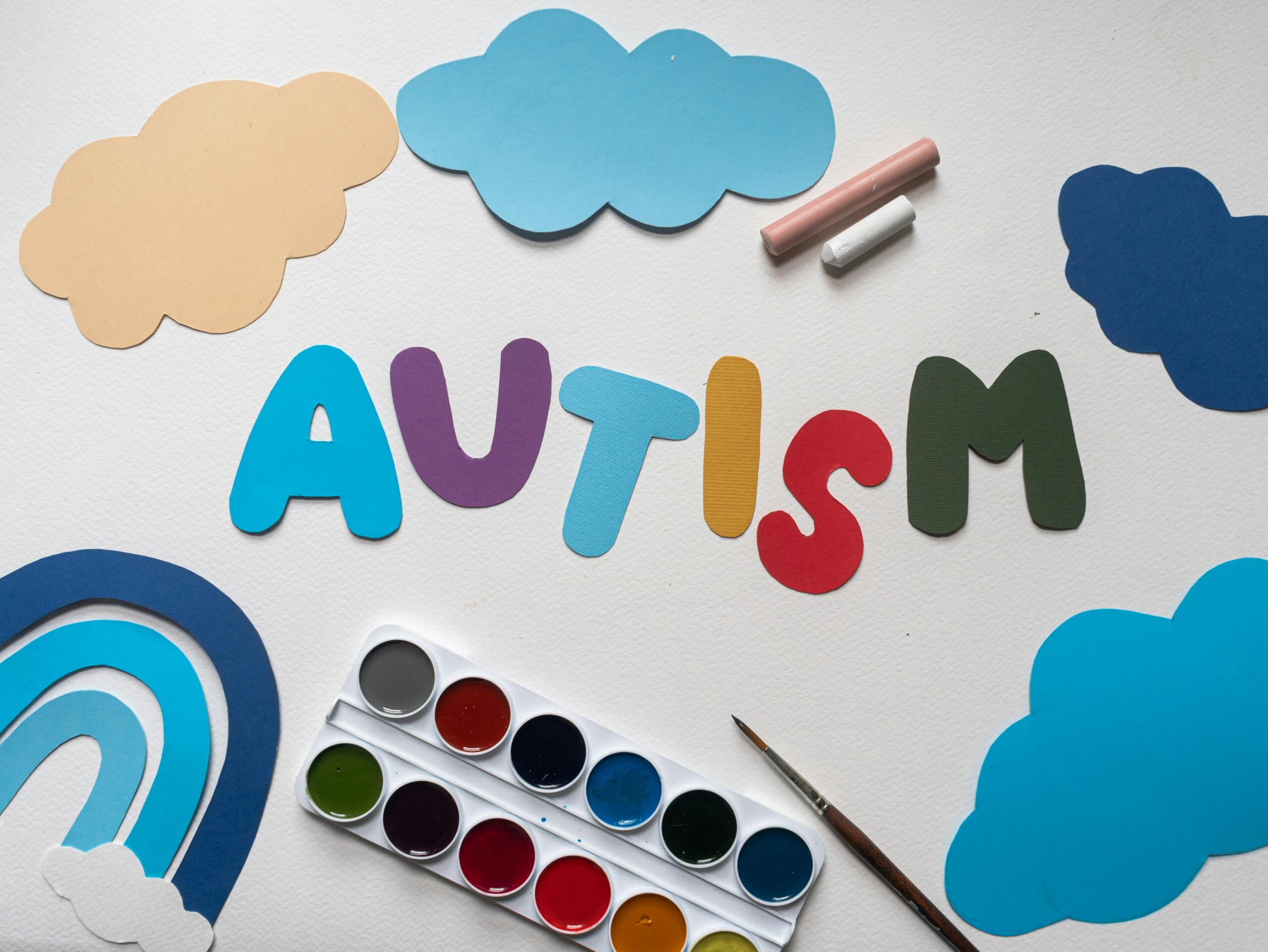
Autism, or autism spectrum disorder (ASD), affects millions of children worldwide. The condition is particularly challenging for parents, who have long had to deal with limited access to care, lack of treatment options, and the general stigma associated with ASD. But thanks to parents’ activism and advances in scientific research, autism is much better understood nowadays.
In this comprehensive overview of facts about autism, we’ll discuss this condition’s prevalence and how it differs by gender and ethnic background. We’ll also talk about the possible causes, risk factors, and some evidence-based autism treatments. Finally, we’ll examine the data on educational outcomes of autistic children and the most recent findings on ASD life expectancy.
Top 10 Autism Statistics for 2024
- Autism affects 1 in 36 children in the US.
- ASD prevalence in the US has increased by 312% since 2000.
- Boys are diagnosed with autism 4.2 times more often than girls.
- Autism is most common among Asian and Pacific Islander children.
- 26.7% of autistic 8-year-olds in the US have profound autism.
- Globally, the UK has the highest autism rate per 100,000 people.
- The average age of autism diagnosis is 4 years.
- Epilepsy affects up to 30% of autistic children.
- 73.6% of autistic students in the US leave high school with a diploma.
- Around 50% of mothers of autistic kids have depression symptoms.
General Autism Facts for 2024
1. Autism affects 1 in 36 children in the US.
(CDC, CDC)
According to the latest report by the Centers for Disease Control and Prevention (CDC), 1 in 36 8-year-olds in the US have been diagnosed with autism. The number — derived from the data collected across 11 US states in 2020 — translates to 27.6 cases per 1,000 children, marking a sizable 20% increase from 23 cases per 1,000 8-year-olds (1 in 44 children) recorded in 2018.
2. Autism prevalence in the US has increased by 312% since 2000.
(CDC, Healthline)
In 2000, the CDC estimated that autism affected 1 in 150 8-year-olds, translating to 6.7 cases per 1,000 children. A new report has been published every two years since then, and the ASD prevalence has increased each time — save for two minor drops in 2002 (-0.1) and 2012 (-0.2).
Besides other factors, experts cite public advocacy, increased awareness of ASD, and access to care as some of the reasons why more cases are identified and properly diagnosed nowadays.
3. Boys are diagnosed with autism 4.2 times more often than girls.
(Wiley Online Library, PsychCentral)
There are several possible reasons why ASD is more commonly diagnosed in boys. For one, girls are more likely to mask their symptoms, resulting in delayed diagnosis or no diagnosis at all. Boys also present motor skills difficulties earlier in life, so they get diagnosed sooner.
Additionally, a 2020 review highlighted two theories as to why autism isn’t diagnosed as often in girls. One of these theories suggests that certain environmental and genetic factors protect girls from displaying ASD-related behavior — and there is some scientific evidence that backs it up. The other theory, which is still insufficiently researched, proposes that girls are less likely to be diagnosed because the criteria for ASD diagnosis were primarily based on male behavior.
4. Autism is most common among Asian and Pacific Islander children.
(CDC)
Looking at the cases of autism by race, statistics from the CDC’s latest report show the prevalence of 33.4 cases per 1,000 Asian and Pacific Islander children, making them the ethnic group most affected by autism. As for other ethnic groups in the US, the prevalence stands at 31.6 cases per 1,000 Hispanic children, 29.3 per 1,000 Black children, and 24.3 per 1,000 White children.
5. 26.7% of autistic 8-year-olds in the US have profound autism.
(Spectrum, SPARK)
The term “profound autism” refers to autistic people with symptoms so severe they’ll likely need lifelong 24/7 care. Researchers coined the term in late 2021, and it immediately became subject to controversy among activists who feared it would divide the autism community.
According to a 2023 analysis of data collected from 2000 to 2016, this type of severe autism most often affects girls, children from racial and ethnic minority groups, and those of low socioeconomic status.
6. Globally, the UK has the highest autism rate per 100,000 people.
(Wisevoter)
With 700.07 cases per 100,000 people, the UK is the country with the highest ASD rate relative to the size of its population. Global autism statistics for 2024 show that other countries in the top five are Sweden (661.85 per 100,000), Japan (604.72), the US (603.38), and the Netherlands (591.54).
On the other hand, Taiwan has the world’s lowest autism rate at 199 cases per 100,000 people. Other countries in the bottom five include North Korea (251.67 per 100,000), Tunisia (284.45), Libya (285.55), and Syria (286.45).
It’s important to note that some low-ranking countries are isolated or embroiled in wars, so their numbers may be outdated or otherwise inaccurate.
What Causes Autism and How Is It Treated?
7. Scientists still don’t know the exact cause of autism.
(Healthline)
While scientists generally agree that children are born with autism, the vast body of research produced so far couldn’t pinpoint its exact cause. The disorder, which is typically diagnosed in early childhood, is thought to occur due to a combination of genetic and environmental factors.
Genetic factors include premature birth, low birth weight, and family history of ASD. Meanwhile, environmental factors include parental exposure to toxins, viral infections, and some prescription drugs during pregnancy. Researchers have also linked ASD in children with untreated mental health problems in expecting mothers.
8. There may be a link between parental age and autism in children.
(Spectrum)
Several studies published over the last 20 years have found that older fathers are more likely to have autistic children. For example, a 2006 Israeli study revealed that men in their 30s were 1.6 times more likely to have children with ASD than those under 30. For men in their 40s, the risk was 5.75 times higher. More recently, a 2014 Swedish study found that children born to fathers over the age of 45 were 3.45 times more likely to have ASD than those born to fathers aged 20–24.
The link between maternal age and autism in children is more complex and in need of further research. While some studies have suggested that women at an advanced age are more likely to have children with ASD, a comprehensive review published in 2018 found that the risk is, in fact, lower for women over the age of 35 than for those under 25.
Additionally, a 2014 Danish study found that teenage mothers are at a particularly heightened risk of having autistic children.
9. Siblings of autistic children have a 20% chance of being autistic.
(ScienceDaily)
A recently published large-scale study found that 1 in 5 siblings of autistic children end up being diagnosed with autism themselves. Based on data from 1,605 children across 18 sites in the US, Canada, and the UK, the study also revealed some interesting new information about how the number of autistic siblings and their gender may impact a child’s risk of having autism.
Namely, if a family’s first autistic child is a girl, their second child is 50% more likely to have autism than if they had an autistic boy first. Also, kids with two or more autistic siblings have a 37% chance of being autistic, while that likelihood is 21% for kids with only one autistic sibling.
10. The average age of autism diagnosis is 4 years.
(CDC, Spectrum)
Although the American Academy of Pediatrics (AAP) recommends screening children at 18 and 24 months, the average age of autism diagnosis currently stands at 4 years. While this two-year gap is a minor improvement compared to previous years, it is still potentially harmful as it results in delayed treatment.
Researchers also noted a drastic decrease in autism evaluation and identification rates since the start of the COVID-19 pandemic in March 2020.
11. ABA therapy is widely recognized as an effective autism treatment.
(Autism Speaks, Verywell Health)
Applied behavior analysis (ABA) is often referred to as the “gold standard” of ASD therapies since it teaches autistic children behaviors and skills they need to succeed in school or at work. One of the most emphasized ABA facts is that the American Psychological Association acknowledges ABA as a fact-based treatment with proven effectiveness. It is also endorsed, among others, by the US Surgeon General and the Autism Society of America, and numerous studies have documented the benefits of its application.
Other successful treatments proven to help children overcome the challenges of autism include:
- Speech therapy
- Occupational therapy
- Physical therapy
- Social skills therapy
- Art therapy
- Animal therapy
In many cases, doctors will prescribe meds to help autistic kids improve their focus, manage their aggression, or cope with anxiety.
12. 36.5% of autism caregivers use ABA therapy for their child.
(Autism Parenting Magazine)
In a recent survey, more than one-third of parents and caregivers of autistic children said they use ABA therapy to help their child overcome the challenges of ASD. What’s more, 93.7% said they would recommend ABA to other parents and caregivers, and 93.9% stated their child had visibly benefitted from attending ABA sessions. As for specific behaviors, 79.2% of caregivers said ABA reduced their child’s meltdowns, while 89.9% said it improved their communication.
Other Interesting Facts About Autism
13. Epilepsy affects up to 30% of autistic children.
(Practical Neurology, Autism Speaks)
The co-occurrence of these two disorders stems from genetic and structural brain differences that characterize them. However, epilepsy isn’t the only condition that frequently co-occurs with ASD. Gastrointestinal disorders are 8 times more common in autistic children, while 7 out of 10 children diagnosed with ASD have eating and feeding problems.
Furthermore, at least half of all autistic children have sleep problems, 30–60% have ADHD, and up to 42% have anxiety.
14. Autistic children are 40 times more likely to die from an injury.
(CNN)
A 2017 study found that autistic kids are 40 times more likely to sustain a fatal injury than their non-autistic peers. The same study revealed that autistic people of all ages are 3 times more likely to die from a preventable injury than the general population. According to the study’s authors, drowning is the most common fatal injury sustained by autistic individuals.
Analyzing data collected over a 15-year period ending in 2014, the authors noted that 29% of those with a recorded autism diagnosis (1,367) died due to an injury, and their average age at the time of death was just 29. Moreover, 40% of these fatal injuries were sustained at home.
15. Autistic life expectancy is lower than the global average.
(Verywell Mind, University College London)
According to a Swedish study published in 2018, autistic people who function independently live around 58.4 years, while those who require constant help live 39.5 years on average. Researchers cite heart disease, epilepsy, and suicide as the key reasons for shorter life expectancy in people with ASD. Evidence also points to some autistic people’s inability to communicate their symptoms to physicians or make doctor’s appointments by phone.
However, many autistic people live much longer than 58 years. A recent UK study found that autistic men and women with no learning disabilities live around 74.6 and 76.8 years, respectively. If they have learning disabilities, their life expectancy drops to 69.6 years for women and 71.7 for men. For context, the average life expectancy in the UK is 80 years for men and 83 for women.
16. 73.6% of autistic students in the US leave high school with a diploma.
(Autism Speaks)
In more positive autism facts, nearly three-quarters (73.6%) of autistic high school students in the US — those receiving special education — graduate high school with a regular diploma. Another 19.3% of autistic students earn a certificate, while only 8.1% drop out of high school.
For many students, though, the road ends there. Earlier studies have found that approximately 1 in 3 autistic students don’t go to college nor manage to find work after finishing high school.
17. 50% of autistic youths receive vocational rehabilitation (VR) services.
(Autism Speaks)
VR services help autistic youths and young adults find the jobs that interest them and acquire the skills and abilities to secure them. While half of all autistic youths in the US receive these services, the numbers for individual states range from 10% in New Jersey to 77% in Oklahoma.
Of those who receive VR services in high school, only 60% go on to get their desired job. Again, the numbers for individual states vary — from 32% in Washington, DC to 76% in Nebraska.
18. Around 50% of mothers of autistic kids have depression symptoms.
(University of California San Francisco)
While autism is never easy on the kids who live with it, the condition invariably takes a toll on their families, too. According to a 2022 report, researchers at UC San Francisco observed higher levels of depression symptoms in about half of all mothers whose kids have ASD over 18 months. Meanwhile, the depression rate for moms of non-autistic kids ranged between 6% and 13.6%.
In a similar study conducted in China in 2019, researchers focused on the mental health of 180 mothers of autistic kids in the city of Chang Sha. The findings showed that 72.5% of the mothers had depression symptoms, 80.2% had anxiety symptoms, and 67.1% reported having both.
Although by no means insignificant, both of these studies are relatively small and imperfect. However, they do suggest that further research is necessary to determine exactly how children’s autism impacts their parents and what could be done to help them cope with it more effectively.
19. There are several autism symbols activists use in their campaigns.
(Autism Parenting Magazine)
The original and arguably most recognizable autism symbol is a puzzle piece. Dating back to 1963, the symbol has been used in many variations over the years, including a multicolored mosaic of interlocked puzzle pieces and a single piece that used blue as one of the unofficial autism colors. In recent years, many activists have stopped using this symbol, saying it mystifies the condition and dehumanizes the autistic experience by reducing it to a mere puzzle piece.
A rainbow infinity sign is another widely used autism symbol. Created by Judy Singer in the 1990s, the symbol aims to promote inclusion of everyone on the autism spectrum. Other autism advocacy symbols include a butterfly with puzzle-piece wings and the so-called “rainbow circle.”
Conclusion
An autism diagnosis is never easy on children or their parents, but there have been some encouraging developments in recent years. For one, modern diagnostic tools allow for earlier identification and treatment of ASD. Also, thanks to public advocacy, increased awareness, and improved access to care, more and more children are getting screened and properly diagnosed.
Facts about autism point to very positive educational outcomes for autistic children, with many of them graduating from high school and receiving VR services to acquire the skills needed to secure a job. While the severity of symptoms and quality of life are major factors, recent research shows that some autistic people can live much longer than previously thought.
FAQ
How does autism impact a person’s life?
Autism is a spectrum, so no two autistic people are the same. Depending on its severity, autism symptoms may include limited communication skills, learning difficulties, restricted interests, and trouble concentrating. While some autistic people (those with so-called “high-functioning autism”) manage to live independently, others require part-time or full-time assistance.
At what age can an autistic child be left home alone?
The Safe Kids Worldwide campaign advises that no child should be left home alone before they’re 12 or 13, depending on their maturity and responsibility.
For autistic children, this will depend on their symptoms and their ability to function independently. To help their child manage and possibly live an independent life one day, experts recommend that parents teach them basic living skills — e.g., eating, drinking, using the toilet, shopping, communicating in person and over the phone, and using technology.
How long can a child with autism live?
According to the latest research, autistic children can live well into their 70s. Of course, it will depend on the severity of their symptoms and their quality of life. A 2023 UK study found that autistic men without learning disabilities live 74.6 years on average, while those with learning disabilities average 71.7 years. As for women with ASD, the average life expectancy for those without learning disabilities is 76.8, whereas those with learning disabilities usually live around 69.6 years.
Sources:
- American Academy of Pediatrics
- American Academy of Pediatrics
- American Journal of Public Health
- American Psychological Association
- Autism Parenting Magazine
- Autism Parenting Magazine
- Autism Speaks
- Autism Speaks
- Autism Speaks
- California Department of Insurance
- Cambridge Core
- CDC
- CDC
- CDC
- CDC
- CDC
- CNN
- Healthline
- Healthline
- Kennedy Krieger Institute
- Medicine
- National Library of Medicine
- National Library of Medicine
- National Library of Medicine
- National Library of Medicine
- National Library of Medicine
- National Library of Medicine
- National Library of Medicine
- National Library of Medicine
- NINDS
- Practical Neurology
- PsychCentral
- Safe Kids Worldwide
- Sage Journals
- ScienceDaily
- SPARK
- Spectrum
- Spectrum
- Spectrum
- Spectrum
- SpringerLink
- University College London
- University of California San Francisco
- Verywell Health
- Verywell Health
- Verywell Mind
- WebMD
- Wiley Online Library
- Wiley Online Library
- Wisevoter



